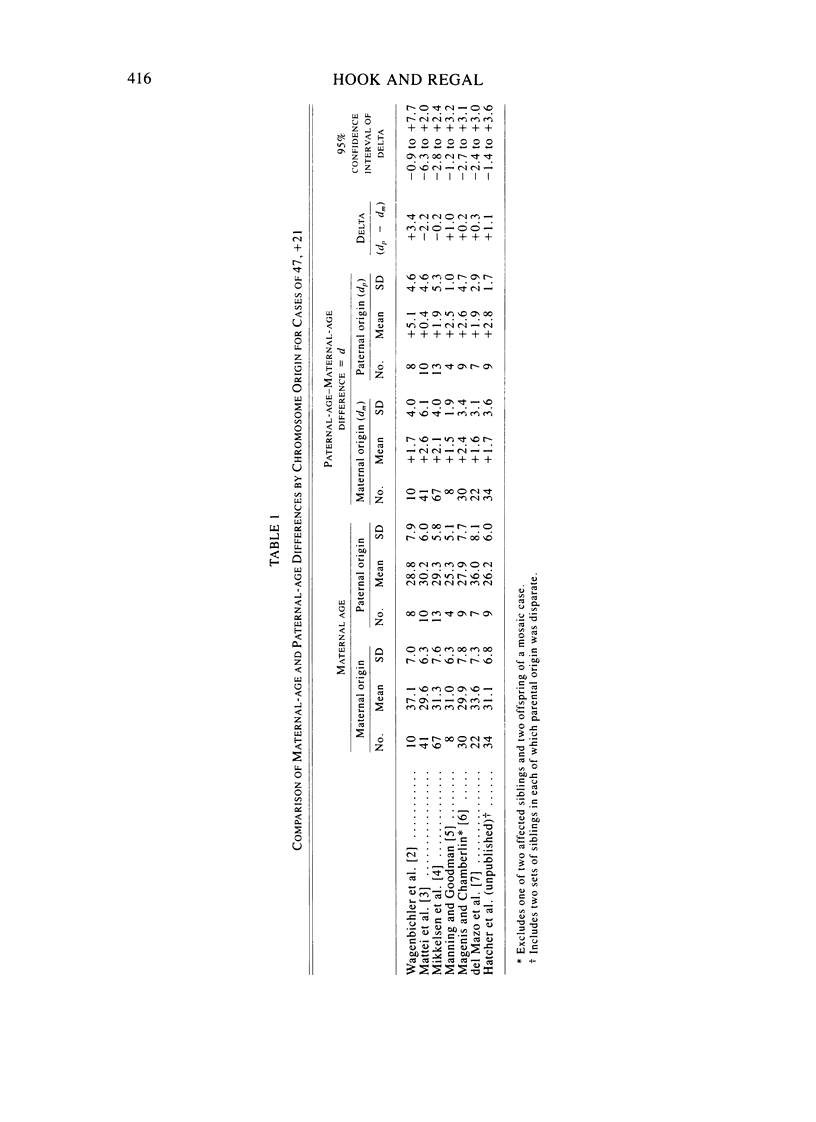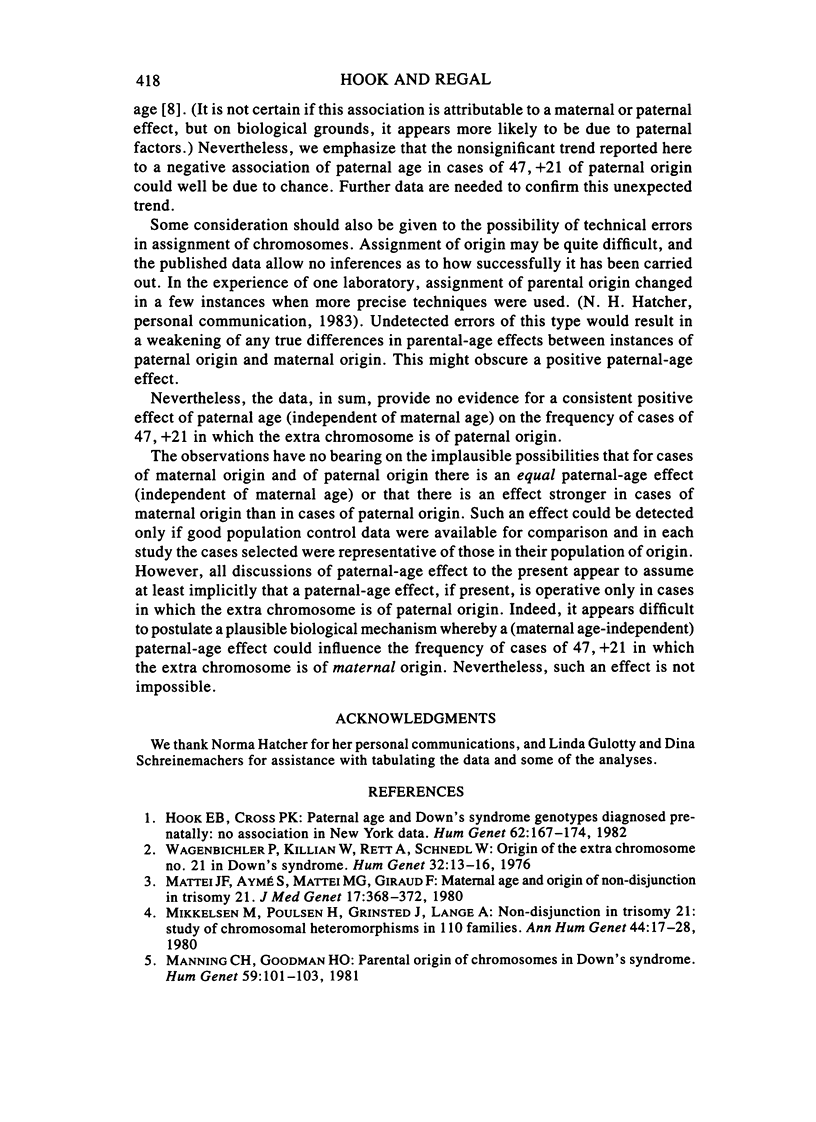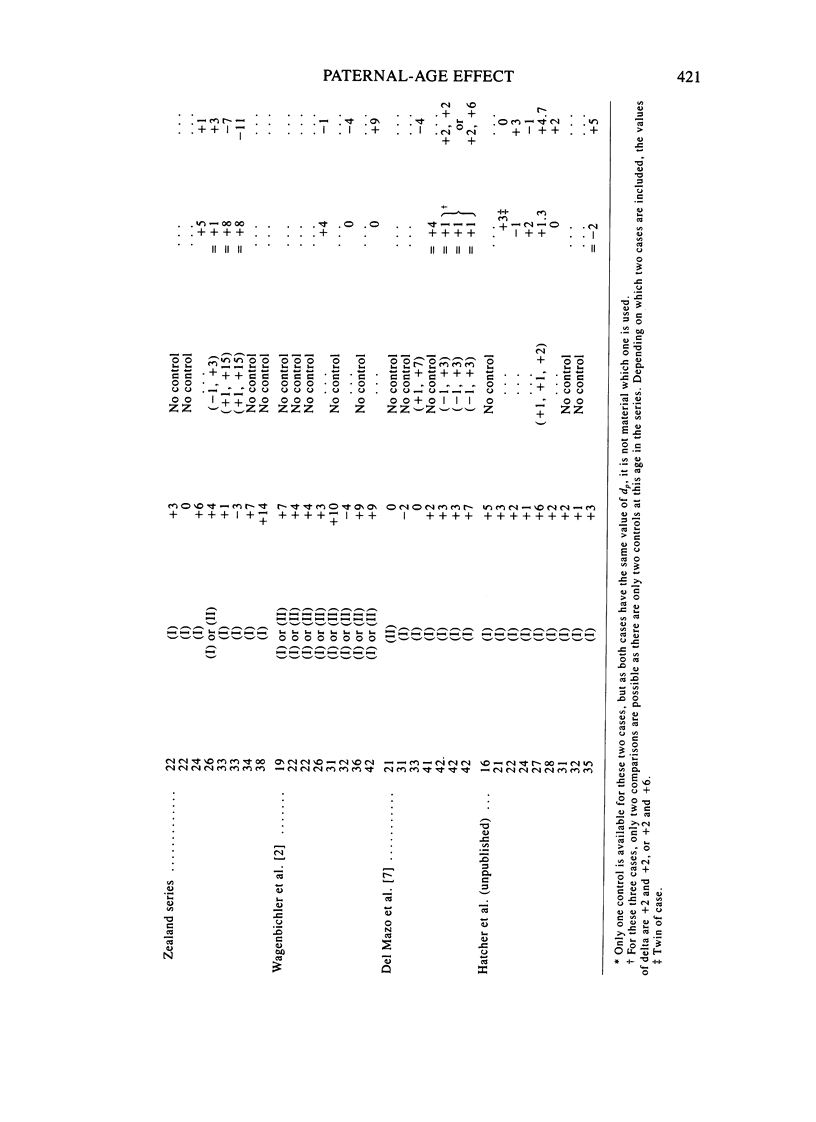Abstract
If there is a paternal-age effect for 47, +21, it would appear most likely to be present primarily, if not exclusively, in cases in which the extra chromosome is of paternal origin. To search for such an effect, data were reviewed from seven series reporting at least four cases of 47, +21 of paternal origin. The mean of the paternal age-maternal-age difference of such cases (dp) in each series was compared with the mean of the paternal-age differences of cases in the same series that were of maternal origin (dm). If the difference between these (dp - dm or delta) is greater than zero, then this would imply a positive paternal-age effect among cases of paternal origin, at least compared to those of maternal origin. In the seven series, the values of delta ranged from -2.2 years to +3.4 years, and there was no evidence in these comparisons for any consistent trend. A second analysis controlled for any effect of maternal-age variation upon this difference. Each case of paternal origin was matched with a case of maternal origin in the same series that was of the same maternal age. Of 60 cases of paternal origin, exact matches were found for 38. In these 38, the mean value of the difference in parental ages, dp - dm or delta, was negative, about -1.1 (+/- 5.1 years). The difference was highest for the nine cases of paternal origin in which the extra chromosome resulted from presumptive second-division non-disjunction, -1.8 (+/- 3.8 years).(ABSTRACT TRUNCATED AT 250 WORDS)
Full text
PDF








Selected References
These references are in PubMed. This may not be the complete list of references from this article.
- Carothers A. D., Collyer S., De Mey R., Frackiewicz A. Parental age and birth order in the aetiology of some sex chromosome aneuploidies. Ann Hum Genet. 1978 Jan;41(3):277–287. doi: 10.1111/j.1469-1809.1978.tb01895.x. [DOI] [PubMed] [Google Scholar]
- Hook E. B., Cross P. K. Paternal age and Down's syndrome genotypes diagnosed prenatally: no association in New York state data. Hum Genet. 1982;62(2):167–174. doi: 10.1007/BF00282309. [DOI] [PubMed] [Google Scholar]
- Manning C. H., Goodman H. O. Parental origin of chromosomes in Down's syndrome. Hum Genet. 1981;59(2):101–103. doi: 10.1007/BF00293054. [DOI] [PubMed] [Google Scholar]
- Mattei J. F., Ayme S., Mattei M. G., Giraud F. Maternal age and origin of non-disjunction in trisomy 21. J Med Genet. 1980 Oct;17(5):368–372. doi: 10.1136/jmg.17.5.368. [DOI] [PMC free article] [PubMed] [Google Scholar]
- Mikkelsen M., Poulsen H., Grinsted J., Lange A. Non-disjunction in trisomy 21: study of chromosomal heteromorphisms in 110 families. Ann Hum Genet. 1980 Jul;44(Pt 1):17–28. doi: 10.1111/j.1469-1809.1980.tb00942.x. [DOI] [PubMed] [Google Scholar]
- Wagenbichler P., Killian W., Rett A., Schnedl W. Origin of the extra chromosome no. 21 in Down's syndrome. Hum Genet. 1976 Apr 15;32(1):13–16. doi: 10.1007/BF00569971. [DOI] [PubMed] [Google Scholar]
- del Mazo J., Pérez Castillo A., Abrisqueta J. A. Trisomy 21: origin of non-disjunction. Hum Genet. 1982;62(4):316–320. doi: 10.1007/BF00304546. [DOI] [PubMed] [Google Scholar]


